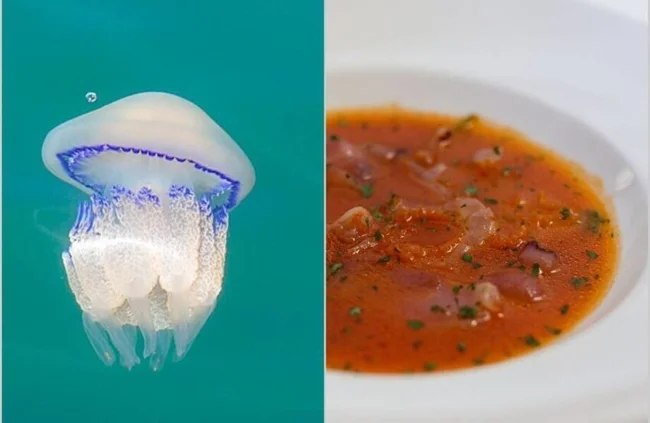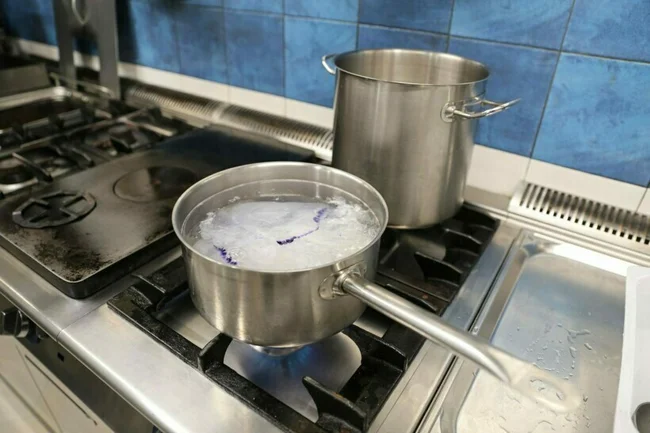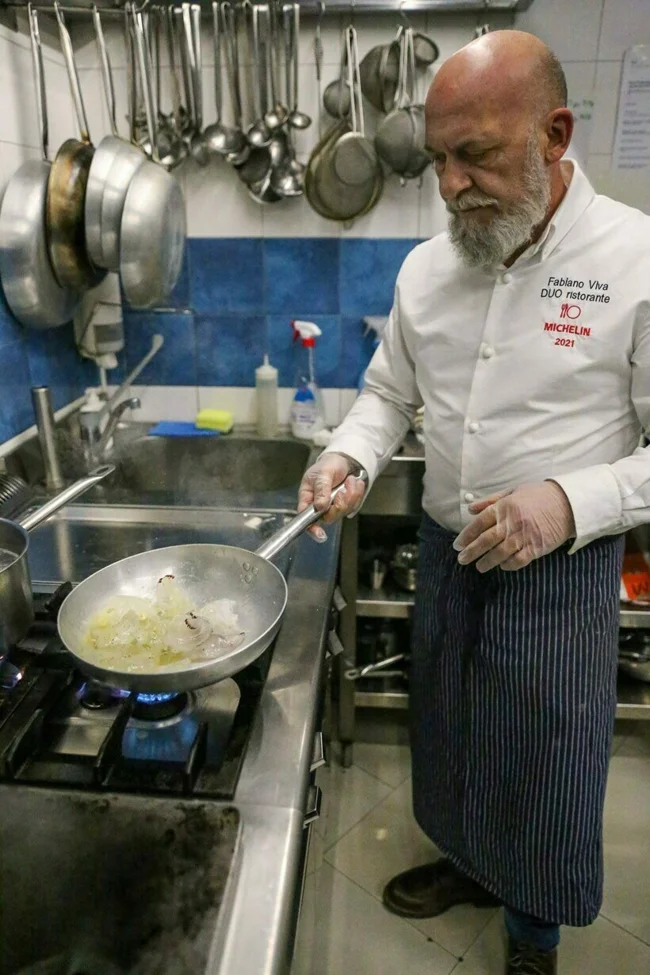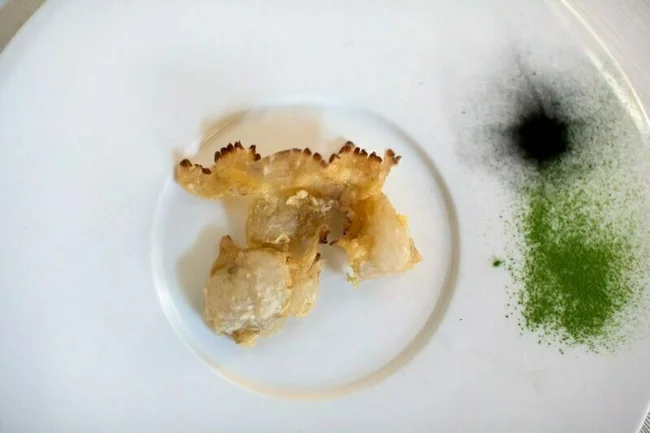It tastes like the sea: why are Italian chefs trying to cook jellyfish (6 photos)
And they are doing well. 
Jellyfish have long been a real problem for many countries that have access to the sea. The number of cnidarians in the sea is growing, and in recent years a lot of these creatures have appeared in the Mediterranean Sea. The Italians decided to fight them... in the kitchen!
Why are jellyfish dangerous?
So why are jellyfish bad? The point is not in the cnidarians themselves, but in their number, which is growing exponentially. With too many of these creatures comes trouble. They destroy fish farms, clog swimming waters, and can even capsize a fishing boat: fishermen often get their nets tangled in a school of jellyfish. Also, a large number of jellyfish affects the ecosystem as a whole. 
Studying jellyfish in a laboratory in Italy
Thus, experts say that due to the abundance of cnidarians, the number of fish in the seas may be decreasing. In addition, there are already fewer fish due to the fact that fishing has taken on industrial scale. Swarms of jellyfish (and sometimes in one school, or smack, as it is called, there can be several thousand individuals) displace other inhabitants, claiming their habitat and food source. As a result: there are fewer fish in the seas, and more jellyfish. That is why in Italy they decided to fight the number of these creatures, and one of the ways is to turn them into a food product for Europeans.
Jellyfish have been eaten for 2 thousand years
In fact, residents of different parts of the planet have jellyfish in their diet: the Chinese have been preparing them for two millennia. The jellyfish fishery is developed in 19 countries; about 1 million tons of jellyfish are caught every year. Of course, it is not so easy to force Italians to switch to jellyfish; many categorically refuse to try dishes made from them. 
Jellyfish marinated in vinegar and soy sauce, one of the most popular dishes in Asia
They have been studying cnidarians for 12 years at the Institute of Food Sciences at the National Research Council of Italy. Seven years ago, scientists decided to collaborate with chefs to create dishes using these jelly-like creatures. So just like the Italians, they didn’t cook jellyfish: they fried them, made soups from them, dried them and served them as chips, turned them into sauces for pasta and pizza. Scientists are also studying options for using jellyfish in cosmetics, nutraceuticals, and fertilizers. 
Boiling jellyfish is how every dish of Italian chefs begins.
Of course, in addition to the attitude of the Italians themselves towards a product that resembles jelly, there are other difficulties. Thus, in the EU the sale of jellyfish for consumption is generally prohibited: the authorities that control the catch still do not consider this creature safe. But the reason is probably not that some of the jellyfish are poisonous, but rather a historical context: in Italy there has never been any interest in jellyfish as a source of food. So all the chefs' dishes are experimental, and in order to cook jellyfish, special permission is required.
Kitchen of the future
If Europe manages to introduce gelatinous sea creatures to the menu, it could help control the number of jellyfish in the sea. In addition, catching these creatures could be a good income for local fishermen, because the depletion of fish in the seas directly affects their activities: the catches are now much smaller. 
An attempt to turn a jellyfish into something extraordinary
By the way, Italians once did not eat tomatoes: in the 16th century they came to Europe from America, and they were long considered poisonous. However, Italian chefs managed to make the whole world fall in love with them: they regularly added tomatoes to pizzas, pastas and other traditional dishes. 
Fried jellyfish
Today it is impossible to imagine Italian cuisine without tomatoes. Who knows, maybe jellyfish will also manage to break the system? After all, this food may be the future.
